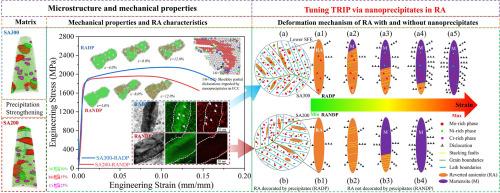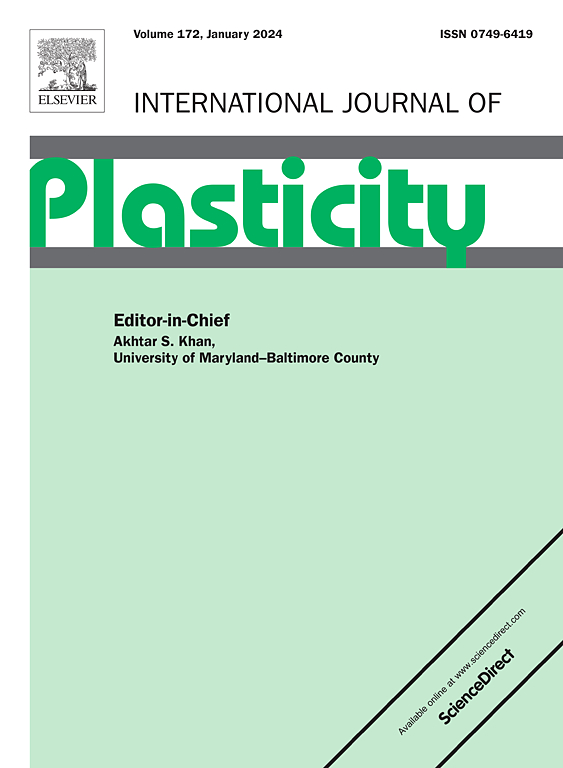Enhancing work hardening through tuning TRIP by nano-precipitates in maraging stainless steels
IF 9.4
1区 材料科学
Q1 ENGINEERING, MECHANICAL
引用次数: 0
Abstract
The transformation-induced plasticity (TRIP) effect is one of the most powerful approaches to improve mechanical properties and work hardening capability of maraging stainless steels (MSSs). However, controlling the TRIP effect poses a great challenge due to the difficulties in manipulating the stability of reverted austenite (RA). In this work, through introducing nano-precipitates into the RA, we achieved a significant improvement in the work-hardening ability for MSSs. The role of the RA decorated and not decorated by nano-precipitates (RADP and RANDP, respectively) was carefully investigated. The precipitation of Ni3(Ti, Mo) and Mo-rich phases within RA causes a low stacking fault energy (SFE) in the RADP compared to the RANDP. In the initial stage of deformation, the RADP is susceptible to the TRIP effect due to the low SFE, which can effectively relieve stresses. Upon further deformation, the nano-precipitates within the RA can block the movement of the 1/6 < 112> Shockley partial dislocations and delay the transformation, thus improving the stability of the RA. This results in a sustainable absorption of stresses and delays the initiation and propagation of cracks. Moreover, the nano-precipitates in the matrix provide a significant increase in strength. Consequently, an excellent combination of high strength, ductility, and work-hardening ability was obtained in the MSSs. The newly developed MSS demonstrates a yield strength of 1790 ± 24 MPa, a tensile strength of 2140 ± 32 MPa, a uniform elongation of 9.5 ± 1.3 % and a total elongation of 16.4 ± 1.1 %. Exploiting the nano-precipitation within RA to tune the TRIP effect provides a new approach for developing high-performance MSSs.


求助全文
约1分钟内获得全文
求助全文
来源期刊

International Journal of Plasticity
工程技术-材料科学:综合
CiteScore
15.30
自引率
26.50%
发文量
256
审稿时长
46 days
期刊介绍:
International Journal of Plasticity aims to present original research encompassing all facets of plastic deformation, damage, and fracture behavior in both isotropic and anisotropic solids. This includes exploring the thermodynamics of plasticity and fracture, continuum theory, and macroscopic as well as microscopic phenomena.
Topics of interest span the plastic behavior of single crystals and polycrystalline metals, ceramics, rocks, soils, composites, nanocrystalline and microelectronics materials, shape memory alloys, ferroelectric ceramics, thin films, and polymers. Additionally, the journal covers plasticity aspects of failure and fracture mechanics. Contributions involving significant experimental, numerical, or theoretical advancements that enhance the understanding of the plastic behavior of solids are particularly valued. Papers addressing the modeling of finite nonlinear elastic deformation, bearing similarities to the modeling of plastic deformation, are also welcomed.
 求助内容:
求助内容: 应助结果提醒方式:
应助结果提醒方式:


